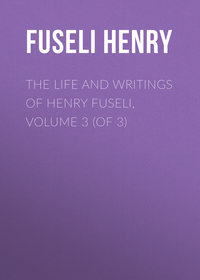Read only on Litres
This book cannot be downloaded as a file but can be read in our app or online on the website.
Read the book: «The Life and Writings of Henry Fuseli, Volume 3 (of 3)»
Something went wrong, please try again later
Genres and tags
Age restriction:
12+Release date on Litres:
28 September 2017Volume:
281 p. 2 illustrationsCopyright Holder::
Public Domain